Sometimes it's better to start big and go small. Let the space station be your first step into the wider world of satellite watching.
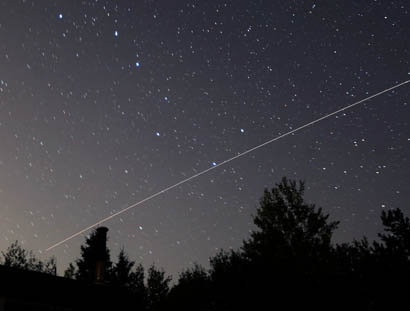
Bob King
I love watching the International Space Station (ISS) and never tire of photographing it or sharing views of the spacecraft's tiny, H-shape through the telescope with neighbors and fellow amateurs. Ditto for the flaring Iridiums. But one day I thought about all those other satellites we see crisscrossing the sky while pointing the telescope or waiting for the next Perseid to scorch the air. Shouldn't I get to know a few of those, too?
As of December 31, 2016, there were 1,459 active satellites in orbit and roughly 7,500 inactive ones, including everything from rocket stages that went along for the ride into Earth orbit, to defunct reconnaissance, science, communications, GPS satellites, and associated parts and pieces. And those are just the big birds. While the U.S. Strategic Command tracked 17,852 objects in orbit as of last July, it's estimated there are 170 million pieces of debris smaller than a centimeter (July 2013) buzzing around up there.
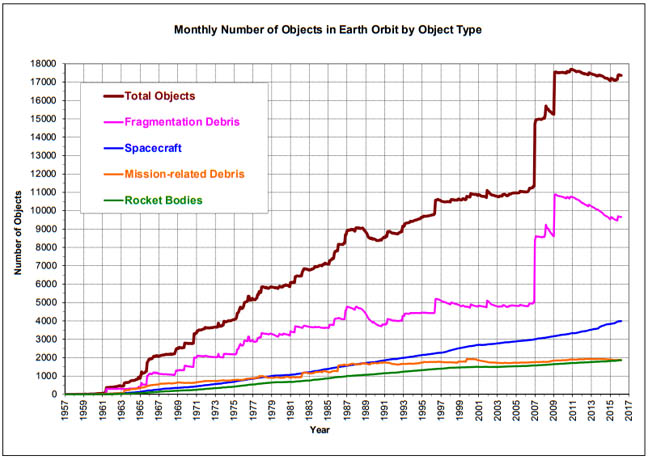
NASA
Some of the stranger things that ended up in orbit before ultimately burning up in Earth's atmosphere were a glove lost by astronaut Ed White during his 1965 Gemini 4 flight; a portion of the ashes of Gene Roddenberry, creator of Star Trek; and a tool bag that slipped from Heide Stefanyshyn-Piper's grasp while she worked on an ISS solar panel in 2008. Classified as ISS DEB (TOOL BAG) and given the official NORAD ID #33442, it was easy to see in binoculars at magnitude +6.4 before its orbit finally decayed.
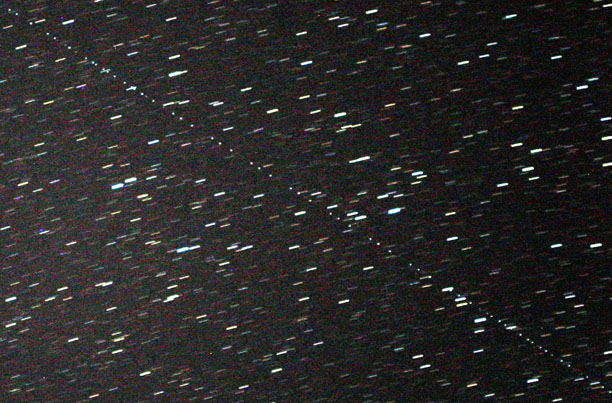
Bob King
To begin working the unplowed ground of lesser known but easy to spot satellites, I asked members of the satellite mailing list, Seesat-l, to share some of their favorite bright and flashing satellites. They graciously forwarded me lists and links, some of which are included at the end this article. A word about "flashers." They're generally out-of-control rocket stages or other debris that tumbles as it orbits. Their metallic surfaces act as mirrors and reflect sunlight in a regular pattern toward the observer.
Others such as Japan's Experimental Geodetic Payload (EGP) are designed to twinkle. The 2.2-meter (7-foot) sphere is covered in mirrors and reflectors that make it sparkle like a strobe light when viewed through binoculars. The recently-launched Russian Mayak, a tetrahedron-shaped reflector, was advertised to out-flare the Iridiums but most of us are still trying to catch any glimpse of it at all. To date, only a few sightings have been reported.
Making a List
I compiled a list of the suggestions, then headed over to one of my go-to sites for tracking the ISS and Iridium satellites, Heavens Above. While there are many great online satellite tracking sites and software prediction programs, I like Heavens Above because of its many options and great maps. To use it, sign in and select your town, then return to the homepage and click on the Daily Predictions for Brighter Satellites link along the left side. You'll be taken to a list of satellites you can filter by magnitude depending on how dark your sky is.
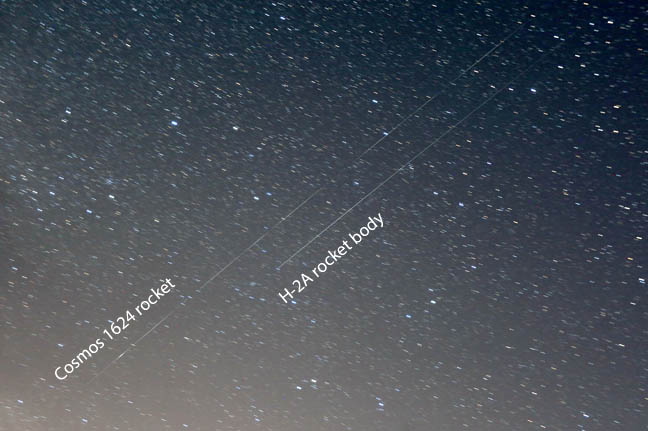
Bob King
I use toggle for magnitude 4.0 (underneath the drop-down boxes for the date) , which pulls up a list of some 55 satellites for evening viewing. If you're out in the wee hours, select the Morning button. My pre-dawn list currently shows a cornucopia of 125 satellites! Even though I can see down to magnitude 6.0 from my observing site on a moonless night, 4th magnitude is plenty dim for naked-eye satellite tracking. Be aware that the listed brightness is the peak magnitude of the object — for much of its path, it can appear considerably fainter.
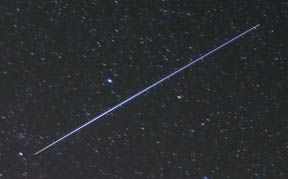
Bob King
That's the main difference between ISS and other satellites. We've gotten so spoiled with its brilliance from start to finish, it's a no-brainer following an entire pass. Every other satellite is much smaller than the ISS and many travel in higher orbits, so we can only follow them across a segment of sky, about one-quarter to one-third of their full path, before they grow too faint.
My quest to track fainter satellites has also taught me that while most show up at their appointed times, there are occasional no-shows. I just move on to the next one my list. Speaking of which, let's return to the Heavens Above list. Clicking the satellite's name will call up a map of its path with minute-by-minute positions marked along that path. Maps are extremely helpful as it's crucial to know just where to look to anticipate a favorite rocket stage's arrival.
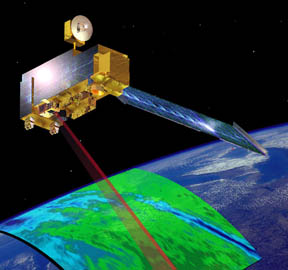
NASA
Next, prepare a list of good candidates for the time you plan to observe and either have the website handy on your mobile phone or write/print a short description of location and direction of motion. Then head out and enjoy an evening of satellite watching, knowing that some of these birds may be watching you, too.
Want more details about what you're seeing? Click on the Info. link at upper right on the map page for individual satellites.
You'll soon discover that many of the objects are the upper stages of rockets used to send a myriad of Russian Kosmos-series satellites into orbit. These include military reconnaissance, science and lunar probes. NASA and ESA are no slouches, either, when it comes to providing rocket bodies for viewing.
Orbits 101
The majority of working satellites and all crewed space stations are in low-Earth orbit (LEO) and range in altitude from about 180 km (111 miles) to 2,000 km (1,243 miles) above Earth. This includes the ISS, Hubble Space Telescope, Earth observation and spy satellites, and the Iridiums. Next most numerous are more than 400 TV, communications, and weather satellites in geosychronous orbit (GEO). These satellites orbit at greater than 36,000 km (22,300 miles) altitude and have orbital periods of 24 hours, the same as Earth's rotation. This lets them "hover" over the same location and provide either a continuous stream of photos of the same region of the planet or serve to relay TV signals around the globe.
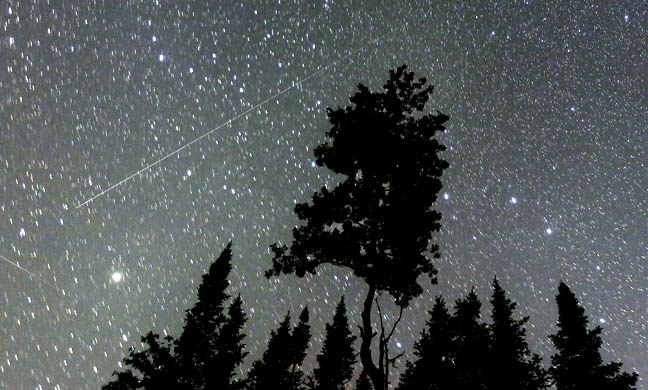
Bob King
A smaller number of satellites, including the Global Positioning Satellites (GPS) that are so helpful in helping me find the nearest ice cream shop, and space environment satellites for measuring radiation effects and space debris, occupy Medium-Earth orbits (MEO) at altitudes from about 2,000 km (1,243 miles) to 36,000 km (22,300 miles).
Find Passes for Any Satellite
All satellites receive a 5-digit NORAD catalog number, which makes it very handy to look any of them up on Heavens Above to determine if they're making passes at you. To use this function, return to the Heavens Above homepage and click on the Satellite Database link. In the box, fill in the NORAD (Spacetrack) number, check the In Earth Orbit Only box, tap enter, and you'll see the satellite at the top of the list. Next, click the Visible Passes link and you're all set.
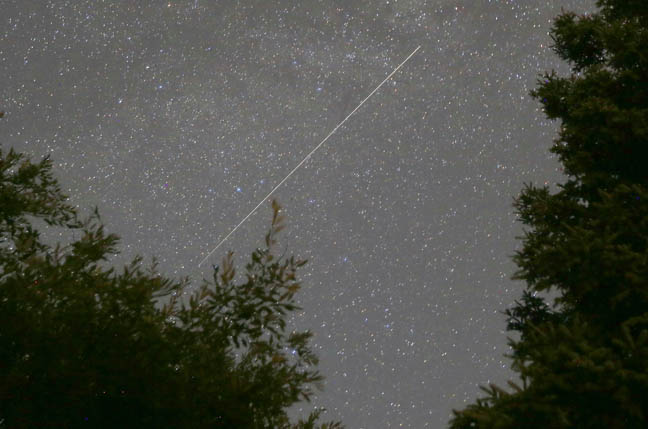
Bob King
With a waxing Moon this week and early next, we've got less-than-ideal conditions for tracking fainter satellites. But use the time to make a list of what you'd like to see once the Moon's out of the picture about August 12th. One of the things I liked about learning new satellites was seeing a couple of those I was only familiar with through the data or photos they provide. It also doesn't hurt having first-hand experience with space junk, forever a hot topic in the news. Once you're comfortable, invite friends and family over and share a little bit of space age history. Everybody loves satellites.
Ones to Watch
Here's a list of satellites to get your started on your adventures away from the ISS:
- Lacrosse 5 R/B (rocket body)
- Atlas-Centaur R/B (multiple rocket bodies in orbit)
- Terra
- Cosmos R/B (multiple rocket bodies in orbit)
- BREEZE-M Debris Tank
- Mayak (good luck!)
- SL-16 R/B (multiple rocket bodies in orbit)
- Tiangong-1 and Tiangong-2 (Chinese prototype space stations, both as bright as magnitude 1.5 )
- The pair of TerraSar-X and Tandem-X
- Hubble Space Telescope / HST (for observers in the southern U.S.)
- ERS-1
- Aqua (Terra's counterpart)
- Envisat
- H2-A R/B (rocket body from November 2009 launch of IGS-Optical 3 satellite)
- Cosmo-Skymed 1 (#31598)
- USA 267 (#41334)
- USA 215 (#37162)
- Okean O (#25860)
- You can also pick from Celestrak's List of 100 (or so) Brightest Satellites
Resources
- Heavens Above
- Visual Satellite Observer's Homepage — A nice, easy guide to satellites.
- N2YO.com — Satellite tracking site. It automatically recognizes your location. You can then use it to find pass times and ground tracks for more than 18,780 objects. This is a great site to use if the NORAD number doesn't yield results at Heavens Above. Just put the number in the Find a Satellite box and then click 10-day-predictions at left.
- Space-Track.org — Create an account to download the latest orbital elements for use in free satellite tracking software programs.
- Celestrak — Another element download site
- Heavensat — Popular satellite tracking software
 15
15
Comments
bob kelly
August 2, 2017 at 6:29 pm
At our Westchester star parties, we start out with the ISS when ever it's visible, but if people can see the Milky Way, they'll notice quite a few faint satellites passing overhead. That, and the occasional meteor, that it gets really exciting for our guests!
You must be logged in to post a comment.
Bob KingPost Author
August 2, 2017 at 10:43 pm
Bob,
That's been my experience, too. The public enjoys spotting satellites. There's a sense of discovery in being the first to spot one and point it out to the group.
You must be logged in to post a comment.
Jerry
August 5, 2017 at 4:09 am
While in High School, my daughter was a member of the marching band. One night, after a practice, my daughter casually mentioned watching satellites. Most of the marching band pooh-poohed the idea, saying that it was impossible to see satellites. She replied by pointing up in the sky and saying "There's one now."
You must be logged in to post a comment.
Bob KingPost Author
August 5, 2017 at 10:49 am
Jerry,
Great little story. The power of the obvious!
You must be logged in to post a comment.
August 3, 2017 at 12:14 pm
Thanks so much Bob for this article, great!
we have a small association in Quart de Poblet, Valencia, Spain, Europe (AstronomiaQuart)
we are happy enjoying the satellites passes over our village at the star-parties meetings,
allways we play wich one is the first who view the satellite. After the observation of several satellites, allways it start the questions: who many satellites are there? What are they doing? How do they return to earth surface? Are all of them useful? do we have a problem of space junk? It's great to see how easy we can raise awareness about satellites and involve in the conversation people from different ages together, finally we star to speak about how to leave in a sustainable way in this planet, our planet, our 'spacecraft' in the space,
thanks!
You must be logged in to post a comment.
Bob KingPost Author
August 3, 2017 at 2:01 pm
You're welcome, Joan! I love what you wrote also. About how you use satellites to start a bigger discussion about the planet, humanity's "spacecraft" in space. Beautiful.
You must be logged in to post a comment.
August 4, 2017 at 6:21 pm
Great article, Bob! I'll add a few fun objects: Anik F1, Anik F2, and Anik F3. Those are geosynchronous satellites that appear more or less south for most of the US. (F2 is at azimuth 162 for me on the west coast, azimuth 229 for the east coast.) Sky Safari will give you their location, and you can easily star hop to them. Sky Safari lists them at impossibly low magnitudes, but I've found them to be quite visible even in 8" scopes. It's so cool to turn off the tracking and watch the sky slide past while the satellites stay rock steady in the center of the field. There are often two or three satellites visible in one field, and you can sometimes satellite-hop sideways several degrees before you hit a gap with no visible satellites in the field.
These three are just the ones I have put in my "favorites" observing list. There are dozens (hundreds?) of others. You can find a pretty good list on the Wikipedia page on Geosynchronous Satellites at: https://en.wikipedia.org/wiki/List_of_satellites_in_geosynchronous_orbit
Sky Safari will give you the position of quite a few of them. Happy hunting!
You must be logged in to post a comment.
Bob KingPost Author
August 5, 2017 at 12:04 am
Thanks Jerry. I'm glad you added those geosynchs. I really wanted to go there but the article was starting get on the long side, so I had to stop at low Earth orbit. I stumble across most my geosynchronous satellites while observing deep sky object just north of the celestial equator. They're fascinating. You can appreciate their high orbits because they remain nearly stationary while all the stars whisk by.
You must be logged in to post a comment.
August 5, 2017 at 9:23 pm
I missed seeing this earlier, so I hope it's not to late to drop in a few words here.
It's good to see this often overlooked aspect of amateur-astronomy get a bit of coverage. And I have a small gift for anyone who wishes to add satellite watching & tracking to their list of things to do at night: An excellent FREE software-program to download and use anytime the spirit moves you - called Previsat. You need to just download it from SourceForge - the same site as the developer's team from Stellarium (an excellent planetarium-program (FREE) for finding your way about the night skies - even runs a telescope!). Instructions are included. And yes - it's absolutely free with no strings attached. Here be:
https://sourceforge.net/projects/previsat/
I hope this gives you a few smiles!
Dave In Vermont
You must be logged in to post a comment.
Bob KingPost Author
August 6, 2017 at 11:44 am
Hi Dave,
Thanks for the tip. I'll check it out.
You must be logged in to post a comment.
Frank-ReedNavigation.com
August 16, 2017 at 1:44 pm
And don't forget the orbiting museum! You mentioned sharing "space-age history". Some satellites have been in orbit for almost sixty years, and many of these made history in their day. For example, Vanguard 1 is still up there in a high orbit and when the geometry and lighting are right it's as bright as magnitude 10.5. Only slightly less historic, Vanguard 3 is visible even in good binoculars (still attached to its upper stage, it's much brighter than Vanguard 1). It's a bit disappointing to discover that none of the early Sputniks are still in orbit (they were intentionally placed in low, rapidly-decaying orbits to maximize mass), and there's nothing from the historic manned space programs --nothing closer than the lunar surface, that is. But there are many other artifacts in the orbital museum. Another target within easy reach is Telstar 1, the first privately-funded satellite and the oldest true communications satellite which transmitted the first live transatlantic television signals back in 1962. To generate list of passes for these satellites, visit heavens-above and click the "satellite database" link. You can browse by year from there or enter a search term like "vanguard*" [note the asterisk * at the end] to get a list of those early satellites and their associated boosters and orbital debris. I do wonder what Vanguard 1 looks like after almost 60 years baking in intense full-spectrum sunlight, pummeled by cosmic rays and micro-meteoroids. I hope someone eventually sends another satellite up to pay a visit to that little aluminum sphere...
You must be logged in to post a comment.
Bob KingPost Author
August 16, 2017 at 3:00 pm
Wonderful suggestions, Frank. The only reason I didn't mention some of these was because they required binoculars or a telescope, and I wanted to focus -- at least on that story -- on the easy, naked eye ones. Thanks again for writing!
You must be logged in to post a comment.
hoppy
September 8, 2017 at 8:20 am
A really interesting article thanks!
You must be logged in to post a comment.
hoppy
September 8, 2017 at 8:32 am
A really interesting article thanks!
I have a vested interest in observing the satellites as I work for a company that builds them, and I enjoy seeing the satellite first in the cleanroom then in orbit! It's surprisingly easy to photograph the geostationary satellites because of their lack of movement; no fancy astronomical gear needed. Simply point a camera on a tripod towards the geostationary arc and take a long exposure of a minute or two with a 100mm or so lens. Although the satellites are faint, provided the sky is dark enough, (to avoid the image over exposing), a few will appear as single points, and they all spread out along a line. The stars will of course trail.
One of my images is here: http://www.bbc.co.uk/news/science-environment-23714597
Richard
You must be logged in to post a comment.
Bob KingPost Author
September 9, 2017 at 11:30 am
Richard,
You certainly have a unique perspective on watching satellites -- from start to finish in the very real sense! I've captured a couple geostationary satellites but seeing your suggestion spurs me on to try it again.
You must be logged in to post a comment.
You must be logged in to post a comment.